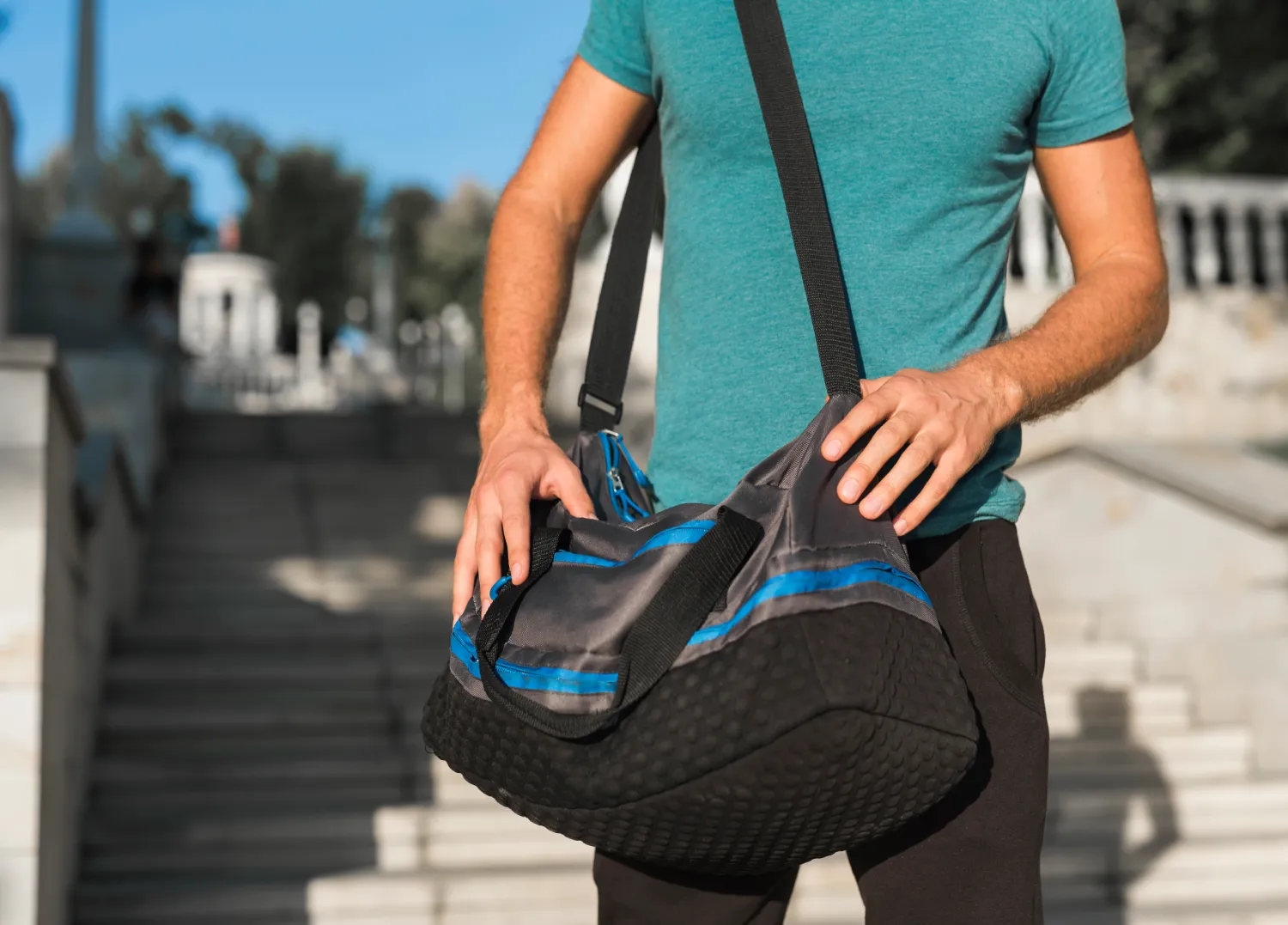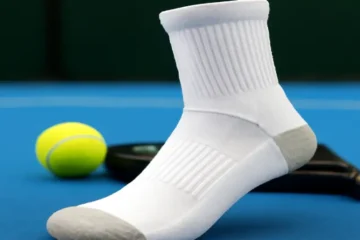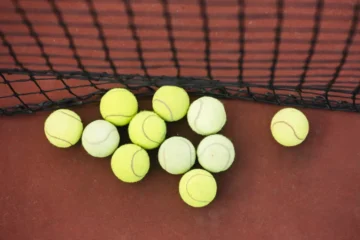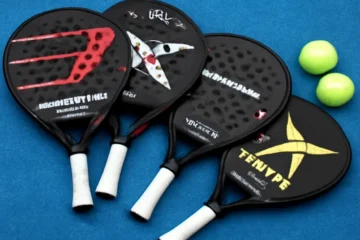As a padel player, you know that having the right gear can make all the difference. But what about the bag that carries it all? A padel bag isn’t just a container for your rackets and accessories—it’s a statement of your style, a protector of your valuable gear, and an essential tool for staying organized on and off the court. Whether you’re a casual player or a serious competitor, your choice of padel bag can elevate your game and streamline your experience.
In this article, we’ll guide you through the best padel bags available, help you understand the key features to look for, and recommend the top picks for different types of players. From functionality to fashion, let’s dive into what makes a padel bag the perfect companion on your journey to victory.
1. Why Your Padel Bag Matters: Function Meets Fashion
Protection: Shielding Your Rackets and Gear
One of the main purposes of any padel bag is to protect your rackets, and the best bags are designed with this in mind. Padel rackets can be fragile, and impacts, temperature fluctuations, and moisture can all negatively affect their performance and longevity. A quality padel bag will have dedicated compartments and padding to shield your rackets from these risks.
Thermal protection is particularly important for protecting the frame and foam of your rackets from extreme temperatures. Look for bags with insulated compartments to keep your gear safe during hot summer days or chilly winter mornings.
Organization: Keeping Everything in Its Place
Padel bags offer a lot more than just racket storage. A good bag will have multiple compartments to keep all your gear organized. From rackets and balls to shoes, clothes, and accessories like grips, sweatbands, phone, and keys, there should be a designated space for everything.
Some bags also feature specific sections for wet items, like your sweaty towel or water bottle. The more organized your bag, the easier it will be to find what you need when you need it.
Convenience: Carrying Options for Easy Transport
Whether you’re cycling to the courts, driving to your local padel club, or walking to the park, carrying your gear should be easy and comfortable. Many padel bags come with adjustable and padded shoulder straps, as well as handles that make it easy to pick up and go.
Backpacks, especially, are ideal for players who prefer to carry their bag hands-free. Larger bags designed for tournaments often include wheels for smooth transportation across the court or club.
Style: A Bag That Reflects Your Personality
Padel isn’t just about performance; it’s also about style. Your bag is part of your kit, and like your racket, shoes, and clothing, it’s an extension of who you are. Some players prefer sleek, minimalist designs, while others want something bold with striking colors and patterns.
The right padel bag can make a statement on the court and show off your personality while keeping your gear secure.
2. Types of Padel Bags: Finding Your Fit
Choosing the right type of padel bag depends on your playing style, how often you play, and how much gear you need to carry. Here are the most common types of padel bags and who they’re best suited for.
The Backpack (2-3 Rackets)
Pros:
- Hands-free and lightweight
- Ergonomic design, making it ideal for commuting
- Easy to carry with adjustable straps
Cons:
- Limited capacity, especially for those who need to carry extra gear
- Not ideal for players who need to store more than a few rackets and essentials
Best for:
The casual player, the commuter, or those who want a compact bag for shorter trips. This bag is perfect if you ride your bike to the courts or need a secondary bag for tournament days.
The Classic Bag / Tote (3-6 Rackets)
Pros:
- Offers plenty of space for rackets, clothes, and shoes
- Often features stylish designs, making it a favorite among players who value aesthetics
- Easy access to compartments
Cons:
- Can become heavy if carried for long periods
- Not as ergonomic as backpacks, so might be uncomfortable to carry for extended periods
Best for:
Players who usually drive to the courts and prefer a balance between space, style, and easy access to their gear. It’s a solid choice for players who don’t need to haul everything, but still want a spacious, well-organized bag.
The Tournament Bag (6-12+ Rackets)
Pros:
- Offers ample storage space for multiple rackets, clothes, towels, and more
- Often includes specialized features, such as thermal compartments to protect rackets from heat
- Built for serious players and coaches
Cons:
- Bulky and may feel excessive for casual games
- Can be challenging to carry without wheels
Best for:
Serious players, coaches, or anyone who spends a lot of time at the club or attends tournaments. These bags can store everything you need, from rackets to shoes, apparel, and accessories.
3. Key Features to Look For in a Padel Bag
When choosing a padel bag, you want to make sure it has the features that meet your needs. Here’s what you should consider:
Capacity & Compartments
How much gear do you need to carry? Depending on your needs, you might want a bag with enough space for 3, 6, or even 12 rackets. Don’t forget about compartments for your shoes, water bottle, phone, and other accessories. Bags with a mix of small and large compartments will help keep everything organized and easy to access.
Thermal / Insulated Pocket
Rackets can be sensitive to extreme temperatures, so having a thermal pocket to protect them from heat or cold is essential. This feature is especially helpful if you play in hot climates or store your bag in a car.
Ventilation & Material
Look for bags made from durable materials like nylon or polyester, which are both strong and water-resistant. Ventilated shoe compartments are also a bonus to help air out damp gear and prevent odors from building up.
Comfort & Carrying Options
Comfortable carrying options are a must for any bag. Padded straps, ergonomic designs, and reinforced handles will ensure that you can carry your bag without discomfort, even when it’s full of gear.
Durability & Brand
Quality is important when it comes to padel bags. Choose a bag made by a trusted brand with a reputation for durability. Check for reinforced stitching, high-quality zippers, and a sturdy base to ensure your bag will last season after season.
Aesthetic Details
While functionality is key, the aesthetics of your bag matter too. Look for colorways, patterns, and brand logos that align with your personal style.
4. Top Padel Bag Picks for Every Player
Category 1: Best All-Rounder (The Workhorse)
Example: Bullpadel Vertex Bag or Head Elite Bag
These bags are great for players who need a balance of size, organization, and durability. They typically hold between 6-9 rackets and feature thermal pockets and shoe compartments. Both bags come in sleek designs, offering both practicality and style.
Best for:
The versatile player who wants a high-quality bag that can handle everything from rackets to apparel while still looking good on the court.
Category 2: Best Backpack (For the Urban Player)
Example: Adidas Advantage Padel Backpack or Nox Padel Backpack
Perfect for players who want a lightweight, ergonomic design, these bags are ideal for carrying 2-3 rackets and essentials. With a minimalist approach, they’re easy to carry and perfect for city commutes.
Best for:
Urban players or casual players who want a simple, compact bag for daily use or practice.
Category 3: Best for Style & Design (The Fashion-Forward)
Example: Siux Paris Bag or Asics Padel Bag
These bags stand out with their vibrant colors and premium materials. If you want your bag to make a statement on the court, these stylish bags will turn heads.
Best for:
Fashion-conscious players who want their bag to be as stylish as their game.
Category 4: Best Tournament Bag (Maximum Capacity)
Example: Babolat Padel Tour Bag or Black Crown Crown Bag
For the serious player or coach, these bags offer maximum storage and organization. They come with multiple compartments for rackets, clothes, and accessories, and include insulated pockets for extra protection.
Best for:
Players who travel to tournaments or spend long days at the padel club and need a bag that can carry it all.
Category 5: Best Budget-Friendly Option (Value Pick)
Example: Kuikma PR990 Bag or Decathlon’s In-House Brands
These bags offer essential features like thermal pockets and good organizational compartments at an accessible price point. They might not have all the bells and whistles of high-end bags, but they deliver excellent value.
Best for:
Budget-conscious players who want a quality bag without breaking the bank.
5. How to Choose: A Quick Checklist
Here’s a quick checklist to help you find the right padel bag:
- How many rackets do I usually carry?
Choose a bag that fits your racket needs. - Do I need to carry shoes and a full change of clothes?
Opt for a bag with additional compartments for shoes and clothing. - How do I get to the club? (Car, bike, walk)
Consider the bag’s carrying options depending on your transportation method. - What is my budget?
Determine how much you’re willing to spend before shopping. - What style do I prefer? (Sleek, sporty, bold)
Pick a bag that aligns with your aesthetic preferences.
Frequently Asked Questions (FAQs) – Padel Bags
1. What should I look for when buying a padel bag?
When buying a padel bag, consider the following key factors:
- Capacity: How many rackets and accessories do you need to carry? Look for a bag with enough compartments to store rackets, shoes, balls, water bottles, and other gear.
- Protection: Ensure the bag has compartments with padding or thermal insulation to protect your rackets from temperature changes and impact.
- Comfort: Choose a bag with ergonomic carrying options such as padded straps, handles, and adjustable backpack straps.
- Material: Opt for water-resistant, durable materials like polyester or nylon to protect your gear.
- Style: Select a bag that reflects your personal style, whether it’s sleek and minimalist or bold and vibrant.
2. Do I need a thermal compartment for my padel rackets?
Yes, if you play in hot or cold conditions, a thermal compartment is highly recommended. Extreme temperatures can damage your padel racket’s frame and foam, which can affect its performance. A thermal compartment helps protect your rackets from heat and cold, ensuring they stay in good condition.
3. What type of padel bag is best for a beginner player?
For a beginner, a backpack or a classic tote bag is a great option. These bags are often lightweight and spacious enough to carry your racket, shoes, and some accessories without being overly bulky. They are also easy to carry and generally more affordable.
4. How many rackets should I be able to carry in my padel bag?
The number of rackets you need to carry depends on how often you play and your level of commitment. For casual or beginner players, a bag that holds 2-3 rackets is usually sufficient. However, for more serious players or those attending tournaments, bags that can hold 6-12+ rackets are ideal, offering ample space for extra gear and equipment.
5. Are there any bags that are specifically for tournament players?
Yes, tournament bags are designed for players who need maximum storage capacity. These bags are typically large, capable of carrying 6-12+ rackets, clothes, towels, shoes, and additional accessories. Many tournament bags also feature insulated compartments to protect your rackets from extreme heat, making them perfect for long days at the courts or tournaments.
6. Can I carry a padel bag as a backpack?
Yes, many padel bags come with backpack straps, making them easy to carry hands-free. This option is particularly convenient for players who commute to the courts, whether by bike, public transport, or on foot. A backpack-style bag distributes the weight evenly, offering comfort and convenience for long walks or cycling trips.
7. What is the best material for a padel bag?
The best materials for a padel bag are water-resistant and durable fabrics like nylon or polyester. These materials protect your gear from moisture, wear, and tear. Additionally, look for a bag with reinforced stitching and high-quality zippers to ensure longevity.
8. Are there budget-friendly options for padel bags?
Yes, there are several budget-friendly padel bags that offer essential features such as compartments, thermal protection, and water-resistant material without costing a fortune. Brands like Kuikma and Decathlon offer great value options for players who need a functional and affordable bag.
9. How can I keep my padel bag clean and maintained?
To keep your padel bag in good condition:
- Clean it regularly: Wipe down the exterior with a damp cloth and mild soap.
- Air it out: Let your bag air dry after use to prevent odors and mold buildup, especially in the shoe compartment.
- Store it properly: Keep your bag in a dry, cool place when not in use. Avoid overstuffing it to maintain its shape.
- Check for damage: Regularly inspect your bag for signs of wear, like broken zippers or torn straps, and repair them promptly.
10. Can I use a padel bag for other sports or daily use?
Absolutely! Many padel bags are versatile and can be used for other sports or daily activities. Depending on the size and design, you can use your padel bag for gym sessions, tennis, or even as a travel bag. The sleek designs and spacious compartments make them a great option for carrying other essentials like laptops, books, or clothes.
11. How do I choose the right size for my padel bag?
The right size depends on your playing needs:
- If you typically play casually and only need to carry a few rackets, a smaller bag or backpack (for 2-3 rackets) will suffice.
- For more serious players or those attending tournaments, opt for a larger bag that can carry 6-12 rackets along with extra gear.
Consider your transportation method and comfort, as larger bags may be harder to carry over long distances without ergonomic features like wheels or padded straps.




